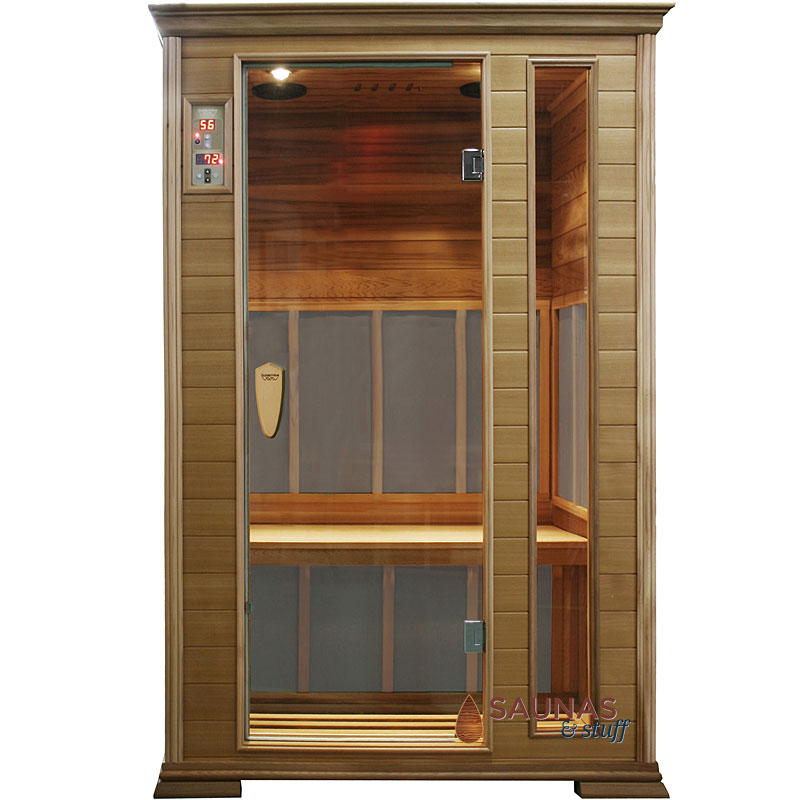Saunas are not the one-use facilities they may appear to be. They provide a great place to sit and relax, but they can also be a great place to exercise. There are many ways to do this, but one of the most popular is doing hot yoga in your home sauna.
What is Hot Yoga?
Hot yoga is a style of yoga exercise performed in hot and humid conditions, feasibly to simulate the climate of yoga's country of origin, India. The heat increases the flexibility of the muscles, which aids in achieving the various yoga poses. There are several different types of hot yoga, including Bikram Yoga, Forrest Yoga, Power Yoga, and Tribalance Yoga. Each type has a slightly different approach and philosophy, but all use varying amounts of heat in the environment.
What Does This Have to Do With Saunas?
Practitioners of Hot Yoga typically attend classes in heated studios with the instructor and other students. However, many people find they are able to replicate the hot, humid conditions necessary for hot yoga in the privacy of their own home saunas. This gives them increased privacy, convenience in when they exercise, and the convenience of not having to leave home. This can be a great option for people with schedules that don't allow time for classes, individuals with disabilities that would be better served by a customized environment, introverts or individuals with social anxiety issues, or parents who'd like to exercise while keeping an eye on the kids.
How to Do Hot Yoga in Your Home Sauna
- Take some yoga classes. This is really important, and the foundation for moving forward. Yoga poses are very precise, and performing them incorrectly is pointless at best, and a potential for injury at worst. If you cannot attend classes, yoga instructors will sometimes provide private lessons in your home. Once you can comfortably and confidently perform the poses with little to no instruction, you are ready for the next step.
- Buy a sauna. Or, if you already own one, prepare it for this particular use. You will need plenty of space to spread out and stretch, so a larger sauna is better than a smaller one. Look into options like our pre-built sauna kits--these are easy to customize to fit any space, and are pretty affordable when looking to get maximum space for your dollar. When purchasing the sauna or customizing it for exercise, make sure to consider the amount of floor space available, whether not it has or needs hand rails for your balance, and the placement/type of heater. A traditional stone-heater sauna will let you control the humidity, but many professionals recommend infrared heaters for hot yoga at home.
- Fine tune the set up. Try it out. Play with different temperature-to-humidity values. Invest in a good yoga mat. Cheaper mats may not be able to stand up to higher temperatures and can become slick with moisture, posing a serious safety hazard. Have your yoga instructor inspect the set up and monitor your first session. They may have ideas for how to utilize other aspects of the sauna, such as the benches and backrests, in your yoga routine. Find your limit for how long and hard you can exercise and respect it, setting a timer if necessary to avoid over-exertion.
Be Safe
If your health is compromised in any way due to pregnancy, illness, or disease, always check with your doctor before taking on a new work out routine or exposing yourself to extreme temperatures and humidity. Hot yoga and sauna use are not for everyone. It's important to respect your own limits. Certain prescription medications are also not compatible with increased temperatures. Always have plenty of water available to avoid dehydration, and if at all possible make sure someone knows where you are when you are using the sauna. Keep your phone right outside the sauna door in case there is a health emergency. Exit the sauna immediately if you begin to feel dizzy or nauseated.



















